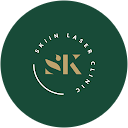
In an era where tattoos have become ever-present, reflecting the essence of self-expression for over one-fifth of adults in the UK, the cultural significance of body art is undeniable. However, as personal narratives evolve and circumstances change, the demand for advanced and effective tattoo removal solutions continues to surge.
Laser technology has evolved in response to this growing need, offering more than just one solution for advanced tattoo removal. As industry leaders at the forefront of innovation, Asclepion understands the pivotal role that laser technology plays in achieving optimal outcomes for both practitioners and their clients. This article will delve into the comparative analysis of two prominent technologies, Q-switched and Picosecond lasers, explaining their mechanisms, exploring their unique advantages, and guiding you toward selecting the most suitable laser technology for your practice.
Understanding Tattoo Removal
Mechanism of Laser Tattoo Removal
Laser tattoo removal operates on the principle of selective photothermolysis. In this precise and controlled approach, specific wavelengths of light are emitted by the laser to target the ink particles embedded in the skin without causing damage to the surrounding tissue. The laser’s energy is absorbed by the tattoo ink, leading to the fragmentation of the pigment into smaller particles. This fragmentation is a pivotal step in the removal process, as it renders the ink particles small enough to be recognised by the body’s immune system.
Subsequently, macrophages, a type of white blood cell, engulf these smaller ink particles followed by them being transported to the lymphatic system for eventual elimination from the body. This approach ensures that the tattoo removal process is both efficient and minimally invasive, allowing for optimal results while preserving the integrity of the surrounding skin tissue.
Factors Influencing Tattoo Removal Success
The success of laser tattoo removal is influenced by several key factors. One of which is the colour and type of ink used in the tattoo. Darker colours such as black and blue typically respond more favourably to laser treatment, while lighter colours may require specific wavelengths for effective removal. Additionally, the depth of the tattoo in the skin plays a significant role, with deeper tattoos often requiring more sessions for complete removal.
Another influencing factor is the individual’s skin type, as darker skin tones may be more prone to pigmentation changes or scarring. Age and ink saturation also impact the removal process, with older tattoos generally being easier to remove, while heavily saturated tattoos may need more sessions for complete elimination.

Q-Switched Lasers
How Q-Switched Lasers Work
Q-Switched lasers are characterised by their unique technology that involves the use of a “Q-switch.” The Q-switch functions as a high-speed shutter within the laser system, allowing the laser to produce extremely short pulses of high-energy light. The laser beam pulses last mere billionths of a second, and the energy emitted in this short period is concentrated into very powerful pulses. This capability is crucial for selectively targeting and breaking down tattoo ink particles without causing thermal damage to the surrounding skin. The Q-Switched technology enables precise control over the delivery of energy, resulting in effective tattoo removal with minimal side effects.
Application in Tattoo Removal
Q-switched lasers are particularly effective in removing dark and heavily pigmented tattoos. They excel in breaking down black, blue, and brown ink, often achieving significant fading or complete removal. While generally safe, Q-Switched lasers may pose a risk of hyperpigmentation, especially in individuals with darker skin tones. Proper calibration and adherence to recommended treatment protocols help minimise these risks. Due to the short pulses of Q-switched lasers, they only cause minimal damage to surrounding tissues, resulting in shorter downtime and quicker recovery compared to some alternative tattoo removal methods.
Our NanoStar® Family
Boasting multiple laser technologies, including the Nd:YAG dual wavelength laser (1064nm and 532nm) and the robust Ruby laser (694nm), our NanoStar family stands out for its unparalleled versatility. The NanoStar C stands out for its featured Mixed-Technology (MT), which enables the simultaneous emission of multiple Q-switched sources, effectively treating a wide spectrum of tattoo colours, including challenging hues like green and red.
Equipped with OptiBeam handpieces, the NanoStar ensures an even distribution of laser energy with a flat-top beam profile. The integrated OptiBeam II technology, automatic spot detection, and a user-friendly interface enhance the efficiency and safety of treatments. Additionally, the ease of adjusting laser parameters for specific tattoo characteristics significantly improves the success rate of tattoo removal procedures, making the NanoStar a reliable and advanced choice in aesthetic and medical laser technology.

Picosecond Lasers
How Picosecond Lasers Work
Picosecond lasers are characterised by ultra-short pulse durations in the picosecond range (trillionths of a second). This technology allows for precise and efficient tattoo removal by delivering pulses at an even faster rate than traditional Q-switched lasers. In addition to enhancing photomechanical effects, these ultra-fast pulse durations produce shockwaves that shatter tattoo pigment into even finer particles. The smaller the particles are, the more easily they will be eliminated by the body’s natural processes, leading to enhanced tattoo fading or complete removal.
Application in Tattoo Removal
As picosecond lasers deliver pulses at a much faster rate than Q-switched lasers, they offer increased precision and efficacy in breaking down tattoo ink. This greater precision also leads to more effective removal of various ink colours, including stubborn pigments. Picosecond lasers are generally considered safe for a variety of skin types, with a lower risk of pigmentation changes. However, proper calibration and adherence to recommended protocols are essential to minimise any potential side effects.
Our PicoStar®
Our cutting-edge Nd:YAG PicoStar laser is renowned for its exceptional power and unique features. With a dual wavelength (1064/532nm) and a pulse shape characterised by a very short laser impulse (300ps), minimal pulse-to-pulse variations, and a remarkably high pulse contrast, it delivers effective treatments and outstanding results across various applications.
Specially designed handpieces enhance versatility, with features like automatic spot size detection and the FLAT-TOP Performance Sets providing the largest spot on the market. The PicoStar’s unique lens system, tailored for both the FLAT-TOP Performance Set and the MicroSpot PICO handpieces, creates a uniform beam profile, preventing hotspots and ensuring a safe and effective treatment. The user-friendly interface and long-articulated mirror arm offer dynamic flexibility, making the Nd:YAG PicoStar a powerful and advanced solution for diverse aesthetic and medical treatments.

Conclusion
The significance of selecting the right laser for tattoo removal lies in its ability to address the unique characteristics of each tattoo, ensuring optimal results and minimising potential complications. One crucial consideration is the diversity of wavelengths emitted by the laser, as different colours of ink absorb light at specific wavelengths. Therefore, choosing a laser system with a range of wavelengths is essential to effectively target the varied spectrum of tattoo pigments.
Additionally, adjustability and customisation features of a laser system are equally vital, allowing practitioners to tailor treatments to individual patients by considering factors such as skin type, ink colour, and tattoo depth. If you want to find out more about our laser systems and our A-List Package, get in touch.









